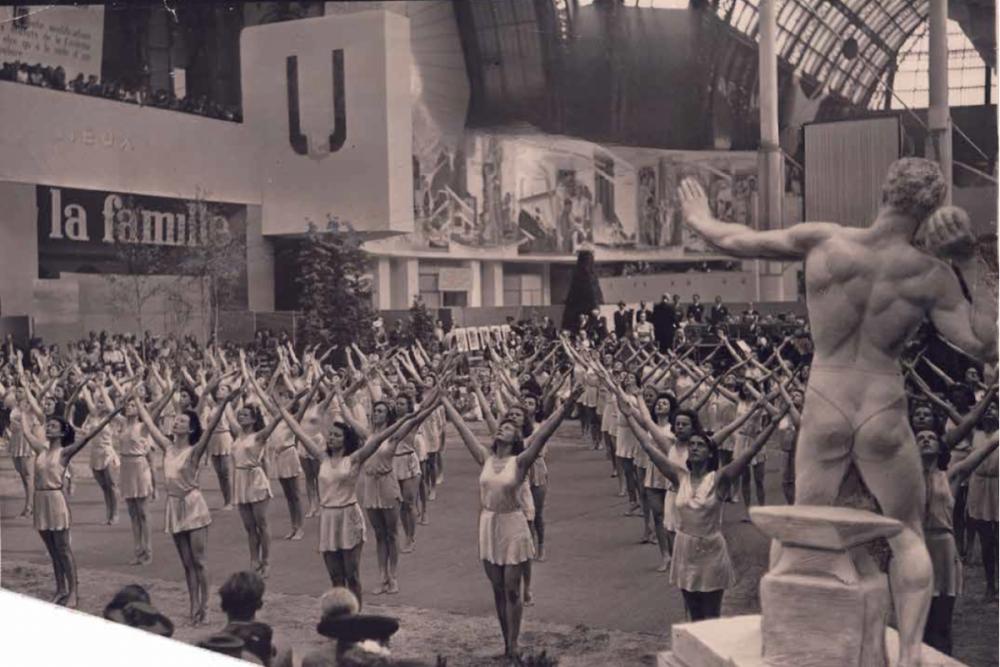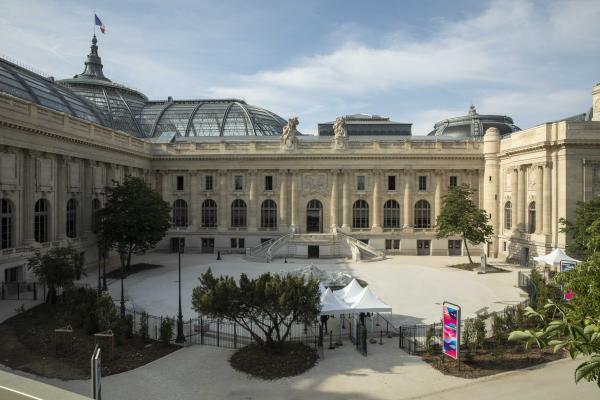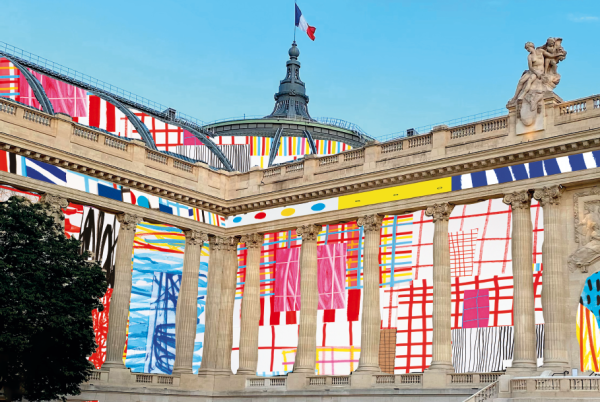Votre panier est vide
Besoin d'inspiration ?
Rendez-vous dans le programme en ligne du GrandPalais
Article -

Name: Nicolas Poussin
Dates: 1594-1665
Position held: Louis XIII’s official painter
The years of training
Nicolas Poussin born in 1594 near Andelys, in Normandy. His father, from a family of solicitors, served in the army of Henri de Navarre and his mother was a magistrate’s daughter. Poussin did not therefore seem destined for a career as a painter. His father placed him with a tutor employed to teach him Latin, but all the young Nicolas liked was drawing. His meeting, when he was 17, with the painter Quentin Varin, passing through Andelys to paint a series of altarpiece panels, probably decided his vocation.
Following initial training in Normandy, in 1612 Poussin entered the studio of Nancy-born Georges Lallemand, in Paris. Now with access to the Royal Library, he studied engraved reproductions of works by Raphael and Giulio Romano, statuary, ancient reliefs and the interiors by the Second Fontainebleau School. He associated in Humanist circles. The Italian Giambattista Marino, known in France as the "Cavalier Marin", official poet to Marie de Médicis, who he met in Paris, commissioned from him a series of drawings illustrating Ovid’s Metamorphoses. It is Marino who, in 1624 in to Rome, would introduce Poussin to artistic and academic circles, and in particular to influential patrons, including the powerful Barberini family.
Poussin, a philosopher painter
Following this initial training between Normandy and Paris, in 1624 Poussin went to Rome. He would remain there most of his life. Poussin very soon obtained the protection of Cardinal Barberini, the nephew of Pope Urban VIII, and his secretary Cassiono Del Pozzo.
The altarpiece he produced for Saint Peter's in Rome won him a great deal of attention. Through it he received the commission for The Martyrdom of Saint Erasmus (1628; Vatican, national art gallery), from the bishop of Gaeta.
Poussin chose to represent the martyr’s stubbornness, which up until then had been inconceivable for the Church. With a desire for independence and a deep awareness – which was exceptional at the time – of his position as an artist, Poussin made the decision to limit his production to easel work for art lovers, who were more flexible and ready to accept his work.
A "philosopher painter", Poussin was inspired by poetic texts which he illustrated with a very particular sensibility. He considered painting to be an art which owed everything to thought. He frequently took his themes from Ovid’s Metamorphoses. A vision of a Golden Age of Humanity haunted the painter’s dreams. Poussin did not include scenes from everyday life in his work. An historical painter, he found his inspiration in atmospheric, light and clear colours, and the golden colours of Titian. Titian’s influence is also evident in the involvement of nature in his work through the use of landscapes and animals (Acis and Galathea in the National Gallery of Ireland, Dublin).
One historical painting made him suddenly famous and caused him to leave a circle of initiates: The Death of Germanicus (1628, Minneapolis, Institute of Art) produced for Cardinal Francesco Barberini. In the mythological paintings, light becomes brighter (Echo and Narcissus, circa 1630, Louvre Museum). He finds his inspiration in poetic subject, for instance in The Poet’s Inspiration (circa 1630, Paris, Louvre). This work is presented as an idyllic vision of the artist’s status using the Classical model.
From 1633, his art revealed the important influence of Raphael in often historical or biblical subjects. Poussin composed two paintings representing The Shepherds of Arcadia. In the Louvre’s second version, an emblematic painting from 1638, Poussin invites us to contemplate the world. The composition’s principal motif is the comforting gesture of the woman who is placing her hand on the shoulder of the young shepherd. The central theme in Poussin’s work is effectively humanism. He invites the spectator to meditate.
The king’s official painter
Called to Paris in 1640 by Richelieu, Louis XIII’s minister, Poussin was not keen to leave Rome. He was then named the king’s official painter and was entrusted with immense decoration projects, including the Louvre’s Grand Gallery. However, his stay in Paris did not give him the role of court painter, but rather that of a court-appointed painter responsible for several tasks: initial letters for the royal printers, supervision of work on churches, etc. On the other hand, for him it was an opportunity to strengthen his contacts among French collectors for whom he would work after 1642.
The "ideal landscape"
Poussin returned to Rome in 1642. Landscape took on more and more importance in his work. It was part of a search for exact measurement, reasoned harmony and sobriety of form. The novelty of this "ideal landscape" was the introduction of – also idealized – characters and architecture. Nature appeared to be from a bygone time. The painter animates his landscapes with heroes. Poussin made himself a master of this nature, recreated through geometry which governed his compositions.
After the two Seven Sacraments series, Poussin discovered a heroic style of “composing”. He seized simultaneously on moral subjects to represent the king’s justice (The Judgement of Solomon, 1648, Paris, Louvre), while elsewhere the concept of Grace illuminates all the biblical scenes through a gentleness contained in nature (Eliezer and Rebecca, Paris, Louvre).
Through allegorical subjects, he represents a grandiose nature which imposes laws on mankind. The characters became sculptural. In the last years of his life, the trembling of his right hand became a handicap. Nevertheless, the inventiveness in his choice of themes, the originality of his compositions and his mastery of colour and light, were never affected.
At the end of his career, which was marked by the painter’s isolation but respect from official artistic circles, he developed an increasingly formal style.
Poussin, master of Classicism
Nicolas Poussin is one of the great masters of French 17th-century painting. His Self-portrait, painted in 1650 and housed in the Louvre Museum, captures the image of him as master of the French School.
But, paradoxically it was in Rome that he developed the Classicism which French art would embrace throughout the 17th century.
Contemplative, considered, reverential, Classicism is defined by its constant reference to Antiquity, rationalism and its fondness for rules and sciences. He sought to reduce everything to its essence, to order, to find laws of Classic beauty, in a quest for harmony and clarity.
Poussin’s artistic ideal is expressed through his decision to illustrate the rarest episodes from Greco-Roman mythology or the Bible, reserving a special place for landscape in his pictorial treatment of them. Poussin skilfully used perspective to add depth to his paintings. This mastery promotes moderation and balance. His last paintings, such as the Four Seasons series (1660-1664, Paris, Louvre) reveal a harmony between history, whether biblical or pagan, and nature.
At the time of his death in 1665, Poussin was one of the most respected painters in Roman artistic circles. Nevertheless, the Classicism and search for internal balance in his art contrast to the excitement and exuberance of Baroque. This Roman, and then European, artistic movement from the end of the 17th century and the 18th century was characterized by freedom of forms, the search for movement, the profusion of ornamentation and the explosion of passion. Baroque is particularly well represented by the work of Italian sculptor Le Bernin.
It was with the founding of the Royal Academy of Painting and Sculpture that Poussin began to exercise a determining influence on later generations. In the early 1660s, it based its entire doctrine and teachings on the ideas and practices of Poussin, as well as on the lessons of Raphael’s work.
Votre panier est vide
Besoin d'inspiration ?
Rendez-vous dans le programme en ligne du GrandPalais
See content : The Grand Palais Sports Chronicles: sport during World War II in 5 key moments

L’École Popard au Grand Palais, 1942
Article -
The 1930s marked the democratization of sport. But with the onset of World War II, the Grand Palais changed its face: it became a sports propaganda tool serving the government's ideology. Let’s look back at five key moments that illustrate this shift.
See content : New season, new exhibitions: tickets now on sale

Article -
Ticketing for our upcoming exhibitions is now open!
See content : What can families do at the Grand Palais right now?

Article -
This autumn, there's no need to choose between art, science and discovery: the Grand Palais brings them all together for you. So get your curious, your dreamers, your players ready... and discover the program for the coming weeks!